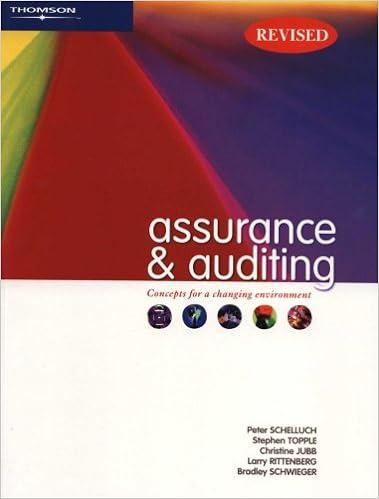| |
| |
| For the Year Ended December 31, 2014 | |
| Cash flows from operating activities: | | | | | | | |
- Depreciation
- Dividends
- Gain on sale of land
- Loss on sale of land
- Net loss
- Retained earnings
| | | | | | | |
| Adjustments to reconcile net loss to net cashflow from operating activities: | | | | | | | |
- Decrease in accounts receivable
- Depreciation
- Gain on sale of land
- Increase in accounts receivable
- Increase in bonds payable
- Increase in common stock
Correct 8 | | | | | | | |
- Decrease in accounts receivable
- Decrease in inventories
- Gain on sale of land
- Increase in accounts payable
- Increase in prepaid expenses
- Loss on sale of land
Correct 10 | | | | | | | |
| Changes in current operating assets and liabilities: | | | | | | | |
- Decrease in accounts receivable
- Decrease in inventories
- Depreciation
- Increase in accounts receivable
- Increase in accumulated depreciation-buildings
- Increase in bonds payable
Correct 13 | | | | | | | |
- Decrease in accounts receivable
- Decrease in bonds payable
- Decrease in inventories
- Increase in accounts payable
- Increase in inventories
- Increase in land
| | | | | | | |
- Decrease in inventories
- Decrease in prepaid expenses
- Increase in accounts payable
- Increase in accumulated depreciation-equipment
- Increase in common stock
- Increase in prepaid expenses
| | | | | | | |
- Decrease in accounts payable
- Decrease in inventories
- Increase in accounts payable
- Increase in paid-in capital in excess of par-common stock
- Net income
- Retained earnings
| | | | | | | |
| Net cash flow used for operating activities | | | | | | | |
| Cash flows from investing activities: | | | | | | | |
- Cash received from customers
- Cash received from gain on sale of land
- Cash received from land sold
- Cash received from issuance of common stock
- Cash received from net income
- Cash received from retained earnings
| | | | | | | |
- Less accumulated depreciation
- Less cash paid for acquisition of building
- Less cash paid for bonds payable
- Less cash paid for dividends
- Less depreciation
- Less loss on sale of land
| | | | | | | |
- Less cash from issuance of bonds payable
- Less cash from issuance of common stock
- Less cash paid for purchase of equipment
- Less decrease in accounts receivable
- Less increase in accounts payable
- Less increase in inventories
| | | | | | | |
| Net cash flow used for investing activities | | | | | | | |
| Cash flows from financing activities: | | | | | | | |
- Cash received from decrease in accounts receivable
- Cash received from decrease in prepaid expenses
- Cash received from issuance of bonds payable
- Cash received from purchase of building
- Cash received from purchase of equipment
- Cash received from sale of land
| | | | | | | |
- Cash paid for accounts payable
- Cash paid for acquisition of building
- Cash paid for issuance of common stock
- Cash received from customers
- Cash received from issuance of common stock
- Cash received from sale of land
| | | | | | | |
- Less cash from net loss
- Less cash paid for dividends
- Less cash paid for loss on sale of land
- Less cash paid for purchase of building
- Less cash paid for purchase of equipment
- Less cash paid for retained earnings
| | | | | | | |
| Net cash flow provided by financing activities | | | | | | | |
- Decrease in cash
- Increase in cash
| | |
| Cash at beginning of the year | | | | | | | |
| | | | | | | |






